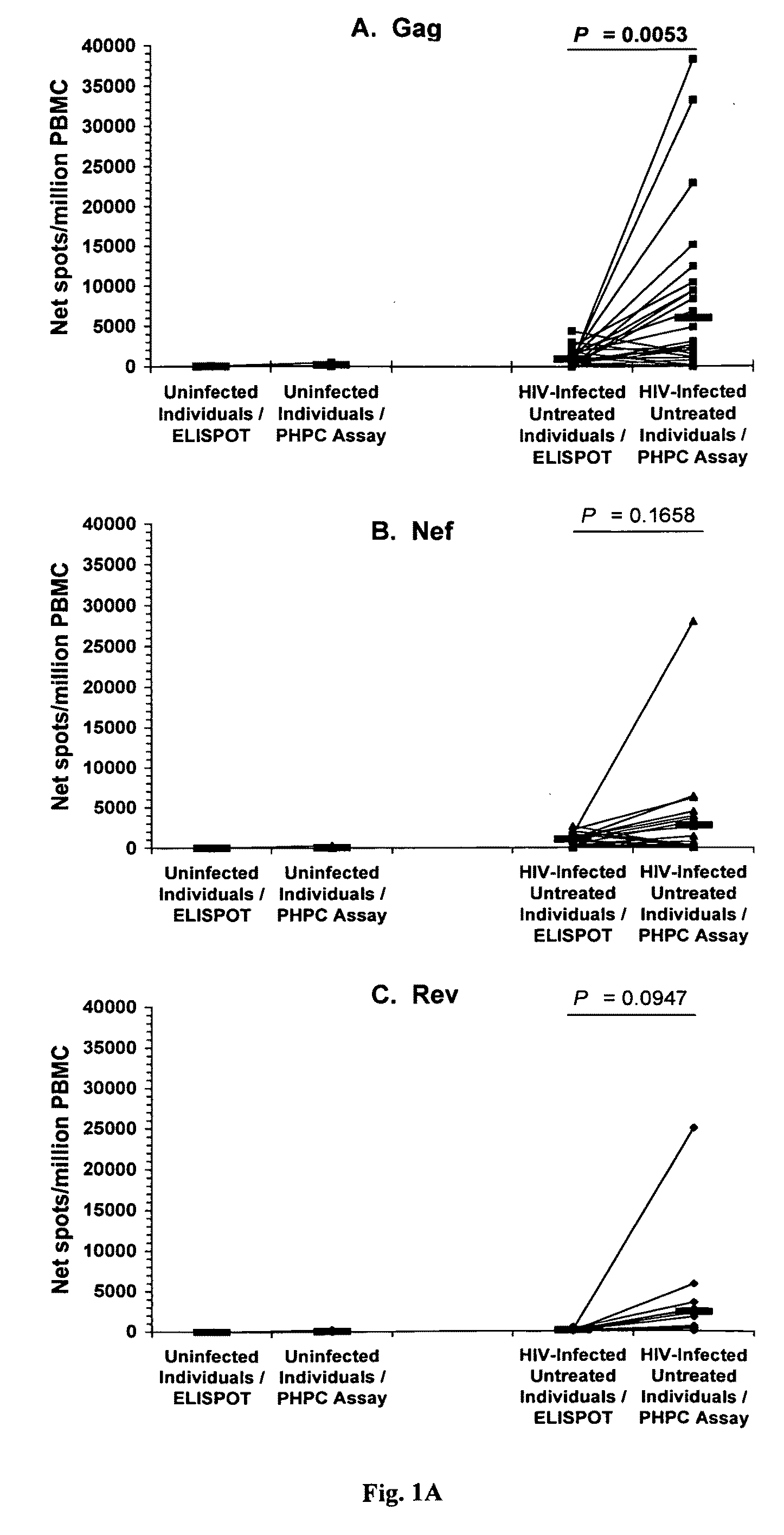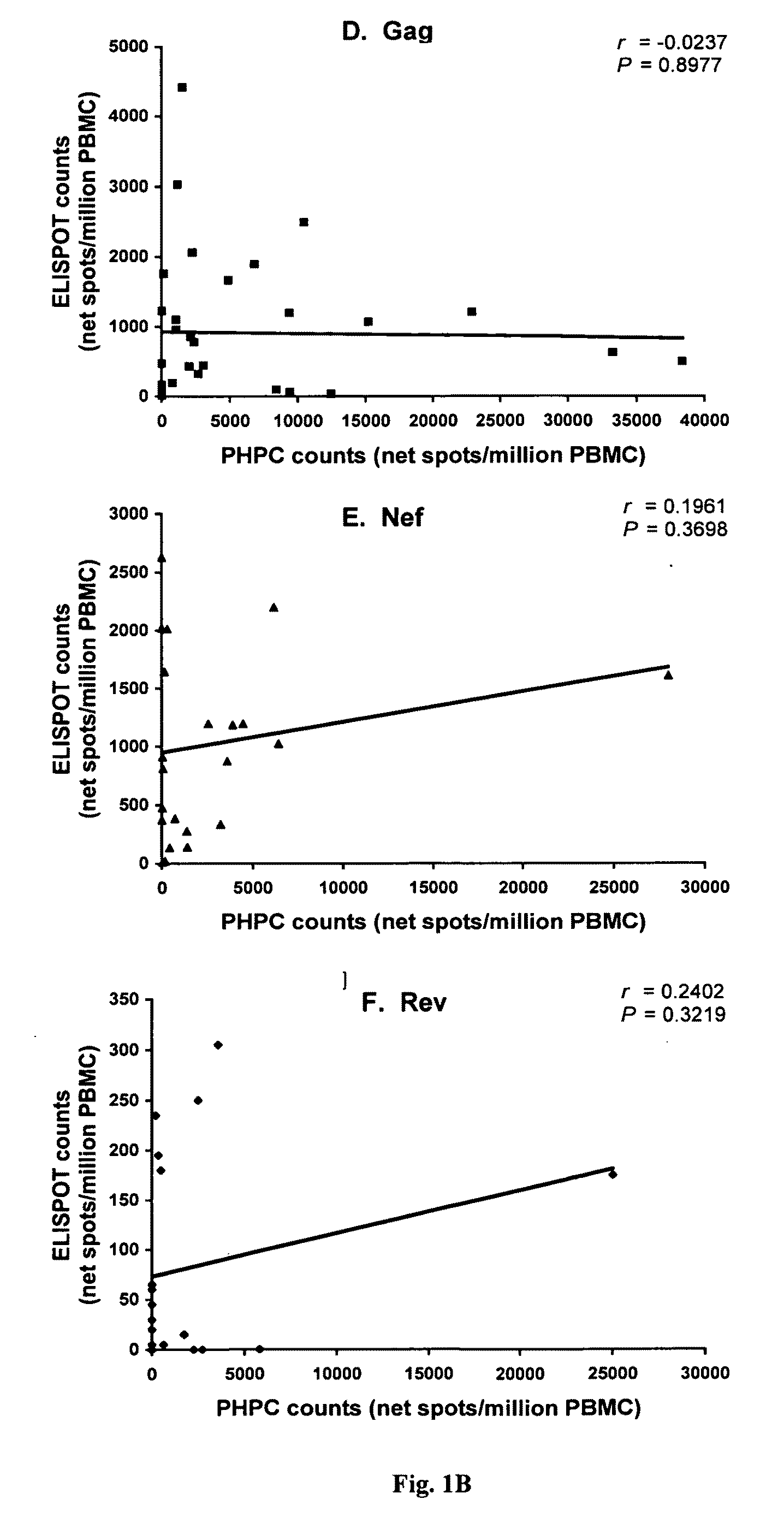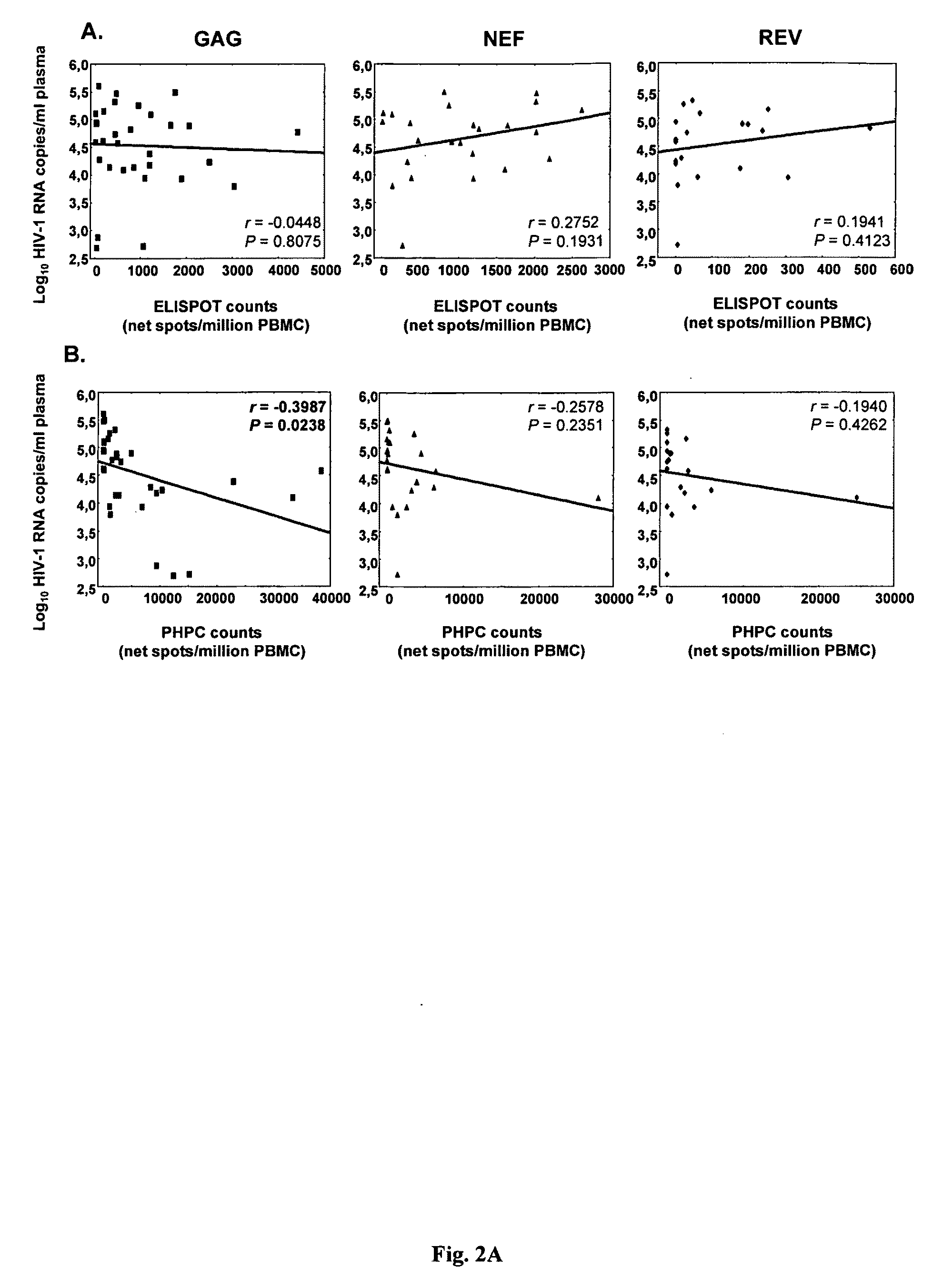Novel assay for precursor T-cells having high proliferative capacity (PHPC-asay)
a precursor t-cell and proliferative capacity technology, applied in the field of new analytical methods, can solve the problems of inability to know whether the same t-cell precursor population that we detect with our assay can be detected with the assay described in prior art, and the association of antigen-specific central memory t-cells with viral load level and cd4 counts in hiv infection have not been established, etc., to achieve low plasma viremia, high proliferative capacity, and high magnitude
- Summary
- Abstract
- Description
- Claims
- Application Information
AI Technical Summary
Benefits of technology
Problems solved by technology
Method used
Image
Examples
example 1
Individual Characteristics and Samples Analyzed
[0048]A total of 32 chronically HIV-1-infected individuals naïve to antiretroviral treatment and 5 uninfected control subjects were analyzed. All samples from HIV-1-infected individuals were obtained from stored frozen PBMC: 28 samples were from the HIV / AIDS Outpatient Clinic, Fondazione Istituto di Ricovero e Cura a Carattere Scientifico Policlinico San Matteo, Pavia, Italy, and 4 samples were from the McGill University Health Center, Montréal, Canada. Table I provides the viral load and CD4+ T-cell counts for the 32 HIV-1-infected individuals.
TABLE IViral load and CD4 counts in chronically HIV-1-infectedindividuals naïve to antiretroviral treatmentIndividualPlasma viral loadaCD4 countsaID(HIV RNA copies / ml plasma)(cells / mm3)112,609629215,082311317,124389424,285257538,053623640,999716767,700283877,283337979,59713610122,90536711179,7698712210,98714113303,6173614312,6282001589,64017716129,0001501740,0006818409,764411987,17141120499189211...
example 2
Individual Characteristics and Samples Analyzed
[0064]A total of 22 comparable individuals participating in the Women's Interagency HIV Study (WIHS), US, were monitored biannually for a median of 11.5 (range 1.5-12.5.5, average 9.7, SD 3.6) years.
Synthetic Peptides, PHPC Assay, and Data Analysis
[0065]If not indicated, synthetic peptides, PHPC assay, and data analysis were the same as in Example 1. Changes / year of CD4 count and plasma viremia (VL) were calculated using a linear regression model.
Results
[0066]In a longitudinal analysis 22 comparable individuals participating in the Women's Interagency HIV Study, US, were monitored biannually for a median of 11.5 (range 1.5-12.5.5, average 9.7, SD 3.6) years. Changes / year of CD4 count and plasma viremia (VL) were calculated using a linear regression model.
[0067]In this longitudinal cohort total Gag, p17- and p24-specific PHPC counts inversely correlated with subsequent VL change / year (r=−0.59,p=0.006; r=−0.53,p=0.015; r=−0.46, p=0.04; re...
example 3
Individual Characteristics and Samples Analyzed
[0068]Individuals receiving antiretroviral therapy (ART) with CD4 counts >300 cells / mm3 (nadir >250 cells / mm3), and HIV RNA PCR 12 weeks Cohort 1: 3 subjects receiving as treatment DermaVir Patches plus continuous ART. Dose: 2 DermaVir Patches (0.05 mg DNA per patch). Cohort 2: 3 subjects receiving as treatment DermaVir Patches+continuous ART. Dose: 4 DermaVir Patches (0.1 mg DNA per patch). Cohort 3: 3 subjects receiving as treatment DermaVir Patches+continuous ART. Dose: 8 DermaVir Patches (0.1 mg DNA per patch).
Synthetic Peptides, PHPC Assay, and Data Analysis
[0069]If not indicated, synthetic peptides, PHPC assay, and data analysis were the same as in Example 1.
Results
[0070]The magnitude of Gag-specific PHPC increased from 10 fold expansion of effectors and >100 fold of long-lived T-cell precursors. ELISPOT responses were negligible in all cohorts (FIG. 8, lower panels in each cohort).
[0071]The magnitude and breadth of HIV-specific T...
PUM
 Login to View More
Login to View More Abstract
Description
Claims
Application Information
 Login to View More
Login to View More - R&D
- Intellectual Property
- Life Sciences
- Materials
- Tech Scout
- Unparalleled Data Quality
- Higher Quality Content
- 60% Fewer Hallucinations
Browse by: Latest US Patents, China's latest patents, Technical Efficacy Thesaurus, Application Domain, Technology Topic, Popular Technical Reports.
© 2025 PatSnap. All rights reserved.Legal|Privacy policy|Modern Slavery Act Transparency Statement|Sitemap|About US| Contact US: help@patsnap.com



